- Home
- Deborah Harkness
The World of All Souls Page 34
The World of All Souls Read online
Page 34
We can think of timewalking in the All Souls world as moving between streams (of time). No two versions of the same person can be present in the same timestream because that person is in fact just one person. So when Matthew and Diana journeyed back to the sixteenth century, present-day Matthew stepped into the sixteenth-century stream, temporarily displacing sixteenth-century Matthew. “Old Matthew” did not die—he simply did not exist in that stream of the past until modern-day Matthew went back to the present. Sixteenth-century Matthew did not go anywhere—he and all his memories and experiences remained present and undisturbed inside modern-day Matthew while he was there with Diana. When Matthew and Diana returned to the present, sixteenth-century Matthew then popped right back in place. He had no memory of Diana, because he had never met her and would not, until centuries later in the Bodleian. The other vampires in the sixteenth century, however, knew exactly when they were talking to sixteenth-century Matthew and when they were talking to modern-day Matthew, because modern Matthew smelled unmistakably older.
Matthew and Diana’s timewalk to sixteenth-century London was a critical journey in Diana’s development as a witch. It was only in that period and place that she could begin to understand her powers and find other witches willing and able to teach her how to harness them. Returning to the present day with a beginner’s training in weaving, a firedrake, and a wealth of lost magical knowledge, Diana was then ready to face the challenges that still lay ahead.
My inspiration for time travel is a mash-up of multiverse theory meets the movie Sliding Doors. Multiverse theory is the idea that an infinite number of universes exist in parallel, almost like streams of water or trains on tracks, running alongside each other. And everything that exists is present in all of them, but in different combinations and with different histories, all at the same time. (This idea was first advanced by a physicist, Nobel Prize winner Erwin Schrödinger, in 1952.) There are lots of competing theories about the subject of time travel, all of which have problems. No one knows how it works. Add to that the fact that most timewalking witches aren’t physicists. So what they perceive (i.e., it’s like changing trains, as in Sliding Doors) is not necessarily what truly happens in the world of All Souls. Why? Because there are not only physical laws at work but also magic. Timewalking, therefore, isn’t just a pure question of quantum mechanics. Supernatural agency is at work, too.
Science
The science in the world of All Souls captures the excitement and sense of discovery that has always characterized the study of nature. Through Matthew de Clermont’s long journey to understand who and what he is, the trilogy tracks the development of scientific thought from ancient times to the present. Because of Matthew’s interests, biochemistry in particular is crucial to the story. And as a counterbalance to Matthew, the historian and witch Diana Bishop reminds us that early scientific study had value even when it resulted in erroneous conclusions. From ancient alchemy to modern genetics, the characters of the All Souls trilogy are concerned with understanding the world at its most elemental level.
Rather than looking at abstract notions of science, the trilogy shows scientists at work. In modern universities like Oxford and Yale, as well as in early modern laboratories in London and Prague, scientists pursue questions not only about the world and their place in it but also about how to do the hands-on and mental work necessary to answer those questions.
What better way to look at the role of science in the trilogy than through the eyes of vampire geneticist Matthew Clairmont? A Discovery of Witches introduces us to his laboratory, a private and secure research facility connected to the University of Oxford that works with ancient DNA to study species evolution and extinction. The lab is state of the science in its equipment, computer capabilities, and reputation. Matthew is a well-respected scientist, but he prefers to work in solitude and publish his findings only occasionally, in the most scholarly publications.
A vampire’s long life suits the prolonged, solitary study required for scientific research, and Matthew’s present research lab is the culmination of fifteen hundred years of learning. With society, beliefs, and discoveries ever changing over time, Matthew’s ideas have of course altered dramatically. But there have always been common threads: an interest in the diversity of nature, in the structure and function of the human body, and in health, medicine, and epidemiology. The key to understanding the influences that have shaped the vampire Matthew, like everything in the All Souls world, lies in a story of books. What would have been Matthew’s favorite scientific books over the centuries? Just as historians study what was once John Dee’s vast library to piece together his thoughts and influences, so too we can take a trip through the centuries of Matthew’s study and track the evolution of Matthew de Clermont, the scientist.
The Evolution of Matthew de Clermont: His Library of Scientific Works Through the Ages
500–999
During the early period of Matthew’s life as a vampire, he would have had very little access to scientific and medical texts outside of those few books about natural history and medicine that Ysabeau, Philippe, Baldwin, and Hugh de Clermont owned from the classical period.
Pliny the Elder, Natural History (A.D. 77)
Pliny the Elder (A.D. 23–79) was a soldier and commander in the Roman military and a public servant under Emperor Vespasian. He was also a prolific writer who researched and wrote books at night, after working during the day for the Roman Empire. Indeed, Pliny is said to have spent every spare moment engaged in research or writing, except when asleep or fully immersed in his bath. This allowed him to write a wide variety of books over the course of his life, including histories, grammars, and even a military work on the throwing of the javelin from horseback (one of Philippe’s favorites). Today he is remembered chiefly for his magnificent and encyclopedic Natural History. This was Pliny’s attempt to bring extensive, exhaustive research about the natural world together with his personal observations to give an understanding of “the nature of things, that is, life” (Preface).
Pliny began his Natural History in A.D. 77. His work on it ended with his death in A.D. 79 as a result of the eruption of Mount Vesuvius. After the initial eruption, he sailed to investigate the calamity and rescue a friend as well as others on the island, but his ship was trapped in the harbor by winds, and all perished. His nephew, Pliny the Younger, published Natural History for him posthumously, with little revision.
Natural History consists of thirty-seven books, or sections, arranged roughly into the Aristotelian categories of animal, vegetable, and mineral, with subjects ordered by analogies and shared qualities as well as the opposite, contrasting qualities. This lends Natural History a meandering but engaging narrative flow. Topics range widely from astronomy to geography, zoology to botany, water to magic to mining. There are books on geography (Spain, regions of Italy, Alpine nations, the cities of Egypt), on trees (fruit, forest, and otherwise cultivated ones), on stones (marble, geodes, the Sphinx), on animals (the habits of lions, the taming of elephants, and reports of dragons in Ethiopia), and on remedies derived from living creatures, plants, and aquatic animals: “The flesh of the sea-tortoise, mixed with that of frogs, is an excellent remedy for injuries caused by the salamander.” Pliny also makes a wide study of humanity and anthropology, including a chapter devoted to “Monstrous Births” and even a chapter on “Persons Who Have Come to Life Again After Being Laid Out for Burial.” This recounts incidents of men and women being revived by flames and other “operations of nature.” These were not, as Pliny takes pains to point out, examples of miracles. Natural History is notable not only for its breadth and depth but also for Pliny’s extensive citation and commentary on his sources, which pointed his readers to hundreds of Roman and Greek authors and their bodies of knowledge.
It is impossible to overstate Pliny’s importance in shaping Matthew’s worldview. Pliny’s wide-ranging, encyclopedic approach would have opened Matthew’s eyes to the
marvelous variety of nature, to its mysteries, and to the hidden connections between geographic regions, flora and fauna, and the human and the divine. Even today Pliny reads as a combination of science and fairy tale, and that combination would have appealed to Matthew’s imagination (important for all creatures, but especially scientists) as well as his intellect.
At the same time, Matthew would probably have found much to argue with in Pliny’s dismissal of miracles. As a Christian (which Pliny was not), Matthew would have been raised to see the hand of God in every aspect of creation and to interpret some wonders as divine messages of approbation or censure. While reading Pliny, Matthew would have drawn lines between science and his own faith. Over the course of his long life, Matthew has shifted that line many, many times.
Today we often look down on encyclopedic knowledge, devaluing it as an unoriginal contribution to knowledge. This does a disservice to the encyclopedic genre. We all need reference books and compendiums of knowledge. The crucial point is that an encyclopedia is your first resort—not your final one. As in Matthew’s case, an encyclopedic treatment of a subject is an excellent foundation, but it is only a first step toward mastery.
Galen, Works (A.D. 219)
Galen (A.D. 129–c. 200–219) was a Greek physician and philosopher renowned for his contributions to the scientific study of anatomy and physiology. As a young man, Galen received a philosophical and medical education, including study at the medical school in Alexandria, and he went on to become physician to the gladiators of the high priest of Asia. The wounds of those gladiators functioned, in his words, as “windows into the body.” Eventually he served as physician to several Roman emperors while at the same time continuing to treat and perform surgeries on patients. He also undertook his own investigations into the systems of the body but was hampered by Roman laws that forbade autopsies and the dissection of human bodies.
Galen believed, however, that there were significant similarities between human anatomy and that of animals. He performed numerous dissections on living and dead animals, including apes, monkeys, dogs, and pigs. These dissections and vivisections allowed him to offer new insights into animal and human physiology. For instance, Galen showed that the voice is produced by the larynx, inflated pigs’ lungs with bellows, proved that both arteries and veins moved blood through the body, and distinguished arterial blood from venous blood. He placed particular importance on a person’s pulse, monitoring it for irregularities to help diagnose illness (a practice still used by doctors today). Though his conclusions contained many errors (for example, that blood was generated in the liver), Galen’s observations and experiments helped shape new and more accurate understandings about the human nervous system, the respiratory system, and, perhaps most notably, the circulatory system.
A core medical theory of the ancient world, which thanks to Galen became ingrained in Western medical practice for centuries, was that of the four humors in the human body. These were believed to exist as four fluids, each with corresponding temperaments: blood (sanguine), yellow bile (choleric), black bile (melancholic), and phlegm (phlegmatic). As Galen emphasized in his treatise On Temperaments, good health relied on the optimum balance of these four humors in the body. The distribution of each in a person could determine that individual’s sensitivity to certain diseases. The practice of bloodletting came from a desire to rebalance the bodily fluids and release excess blood. The four humors also corresponded to mixtures of hot, dry, cold, and wet, as well as the core elements earth, air, fire, and water, and the seasons spring, summer, autumn, and winter.
As Galen accumulated skill and knowledge, he dictated his findings to scribes. Historians believe that by the end of his life he had authored as many as five hundred treatises, though only about a third of these have survived. Even so, Galen is among the most prolific writers in antiquity. At a time when many Roman physicians relied on divination and prophecy to make diagnoses, Galen’s emphasis on empiricism helped transform Western medicine. He became the established authority for European medieval medical students until challenges to his theories emerged in the sixteenth century.
As with Pliny, it is impossible to overstate Galen’s influence on Matthew. Galen’s anatomy, physiology, and therapeutics would have shaped the first millennium of Matthew’s experiences as a patient and doctor. Once he had learned to read, Matthew would have read everything that Galen wrote, multiple times. As a vampire, Matthew would have been particularly fascinated by Galen’s anatomy and physiology. After all, not even Matthew could see beneath a creature’s skin. Galen’s vivid imagery would have helped Matthew imagine the structures and functions of the human body. Galen likened the aorta, for instance, to “a trunk divided into many branches and twigs” that nourished the whole body. And in his treatise on the use of the pulse in diagnosis (De pulsuum differentiis), Galen provided descriptions of twenty-seven distinct types of pulse for Matthew to observe.
More important, Galen’s treatise Is Blood Naturally Contained in the Arteries? (An sanguis in arteriis natura contineatur) would have given Matthew an explanation for why, when an artery is first cut, there is no sign of blood but only air. The answer, for Galen, was that the arteries carried both blood and pneuma (spirit) while the veins carried only corporeal blood. Such a theory would have given Matthew a framework for understanding why, for instance, he was able to see people’s thoughts when he drank their blood.
Galen’s work on the elements and bodily humors (De elementis and De temperamentis) would have provided Matthew with an explanation for his blood rage (that he had an excess of choleric humor) as well as a way to cope with his dark moods (that he was prone to a melancholic humor). Galen’s theory of the four humors would also have served as Matthew’s template when diagnosing his first patients.
Pedanius Dioscorides, De materia medica (A.D. 50–70)
Pedanius Dioscorides (c. A.D. 40–90), the author of De materia medica, served as a physician in the Roman army. In that position he traveled extensively throughout southeastern Europe, and everywhere he went, he sought out the medicinal uses of local plants and animals, and their preparation and applications, which he recorded and added to his professional repertoire of medical treatment. Eventually Dioscorides compiled his findings in a five-volume book in Greek, which was translated into many languages and is probably best known by its Latin title, De materia medica.
De materia medica includes information on nearly six hundred plants as well as some eighty animals or animal parts and almost a hundred minerals. Dioscorides provides his readers with approximately a thousand medicines derived from these. The five volumes are arranged such that medicinal plants appear first, then animal parts, roots, seeds and juices, then primarily culinary herbs, and finally wines and minerals. Within each volume the various plants, animals, and minerals are arranged in a grouping with others that have similar medicinal effects, rather than alphabetically or geographically, to aid the physician healer. Most surviving manuscripts and later printed editions of the text are heavily illustrated so that plants could be more easily identified.
His pharmacopeia ranged from copper to colocynth, nursing-mother’s milk to vipers, pomegranate-root bark to opium poppies, with preparations for treating everything from toothaches to madness. De materia medica marked an important shift from thinking about the natural world as a place of fantastic wonders to seeing it as an environment full of natural substances and creatures possessed of significant healing properties. The book remained in continual use by physicians and healers throughout the Mediterranean, North Africa, and Europe until well into the sixteenth century. In fact, its success and wide distribution meant that the plants defined in the book were often not native to a specific area, so physicians and healers would sometimes substitute native plants that resembled those Dioscorides described, with predictably disastrous results. The European discovery of the Americas put particular stress on the authority of Dioscorides’ catalog of plants and the
ir uses. Still, his pharmacological contributions proved to be of lasting medical value. Medical preparations of many of these same plants, such as willow bark (salicylic acid) and opium poppy (morphine), remain in use today for the same purposes that Dioscorides recommended.
In many ways Dioscorides’ work is an encyclopedia of plants. He and the Roman encyclopedist Pliny were contemporaries, and Dioscorides’ influence on Matthew is similar to that of Pliny's. From Dioscorides, Matthew would have received his foundational knowledge of plants and their medicinal properties. He would have used his copy of Dioscorides whenever recommending a medicine or a treatment to his patients. Matthew would also have made his own investigations into his native mountains looking for plants mentioned in Dioscorides and similar substitutes. There is no doubt that there is at least one heavily annotated copy of Dioscorides’ De materia medica in Matthew’s libraries, perhaps including notes on his experiences with the various plants and medicines.

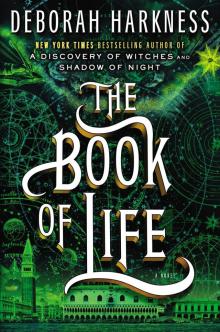 The Book of Life
The Book of Life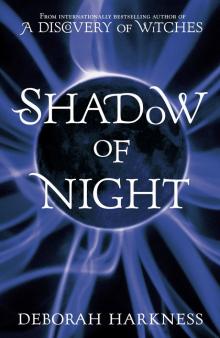 Shadow of Night
Shadow of Night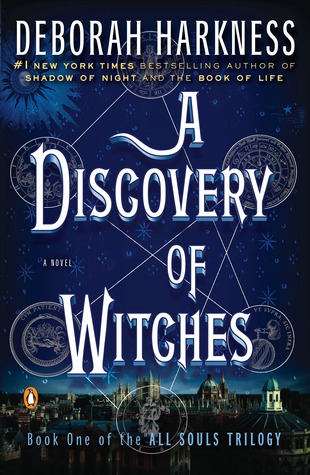 A Discovery of Witches
A Discovery of Witches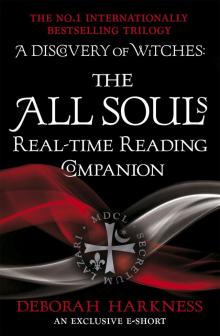 The All Souls Real-Time Reading Companion
The All Souls Real-Time Reading Companion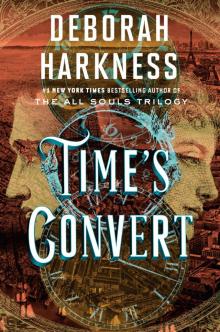 Time's Convert
Time's Convert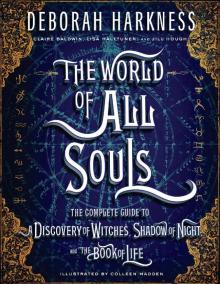 The World of All Souls
The World of All Souls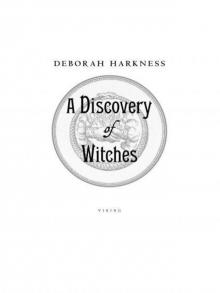 A Discovery of Witches: A Novel (All Souls Trilogy)
A Discovery of Witches: A Novel (All Souls Trilogy) Shadow of Night: A Novel
Shadow of Night: A Novel